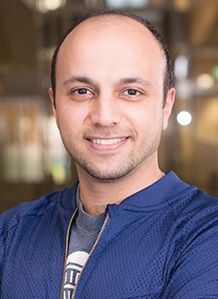Arman Mahboubi Soufiani

Arman Mahboubi Soufiani received his B.Sc. degree in Mechanical Engineering - Manufacturing and Production at Isfahan University of Technology, Isfahan, Iran in 2009 and his M.Sc. in Waste Recovery – Sustainable Energy Technology at University of Borås, Borås, Sweden in 2012. Right after, he took course works in biotechnology for biofuels at University of Borås (2012-2013). He fulfilled his PhD in Photovoltaics Engineering at University of New South Wales, Sydney, Australia (2014-2017). He is currently a postodcoral fellow in the Silicon Hydrogenation Group at UNSW. His PhD work was dedicated to the understanding of photo-excited electron-hole interaction (i.e. excitons) in organic-inorganic perovskites and the impact of microstructure on their excitonic properties. He further worked towards the development of luminescence imaging measurement tool for characterization of the electronic properties of perovskite solar cells.
His current research interest in general is to understand the nature of interfacial and bulk defects in mono-like silicon wafers/solar cells and non-silicon polycrystalline semiconductor absorbers and corresponding solar cells and their passivation. He works towards optimization of the laser-doped selective emitter based silicon solar cells with the focus on improving the laser-induced defect passivation methodologies through hydrogenation. Relevant to this, he conducts research on hydrogen-trapping in mono-like silicon wafers. His other focus is to investigate the role of bulk and interface defects and charge-carrier trap centres on the performance and stability of perovskite solar cells (and adamantine PV materials) through the deployment of photo- and electro-luminescence imaging and potential approaches for defect treatment.

